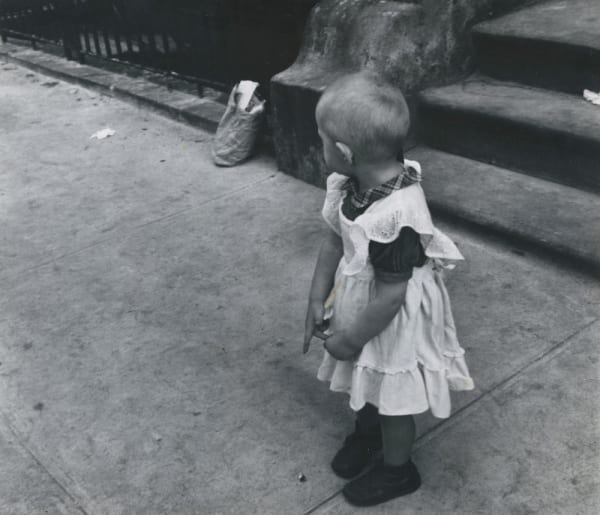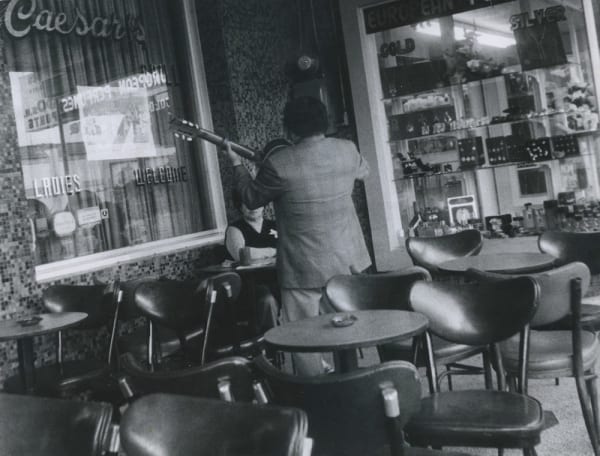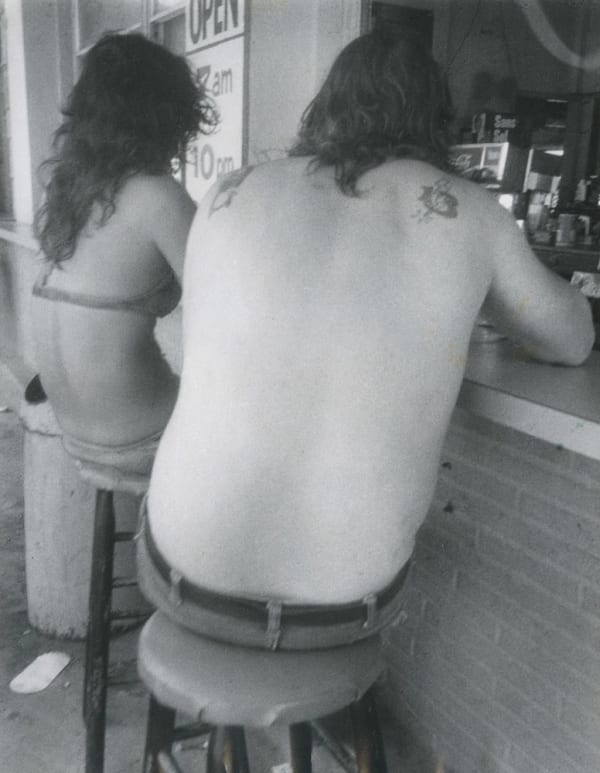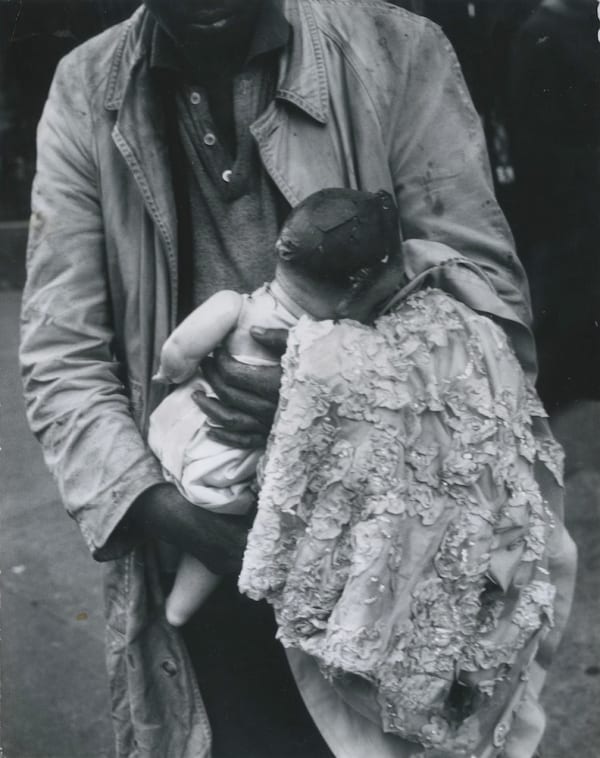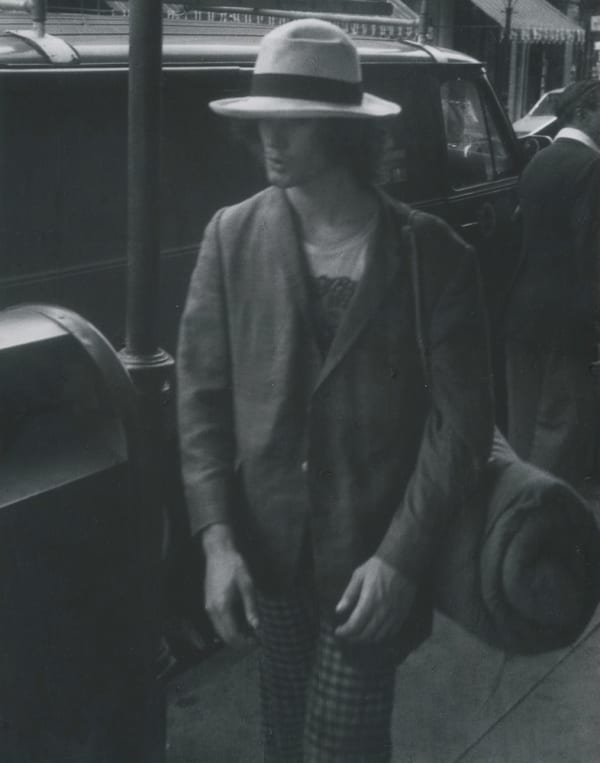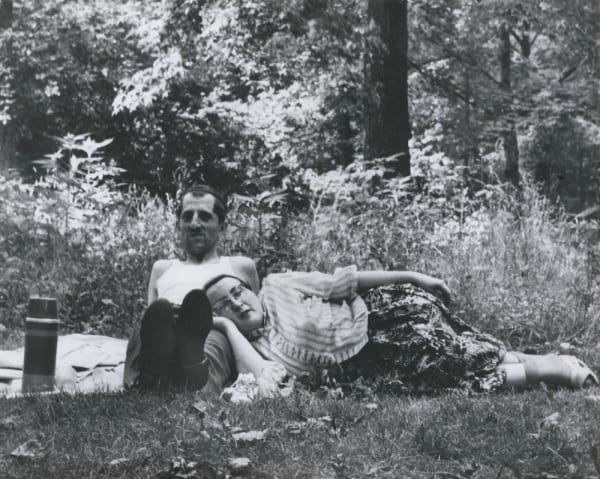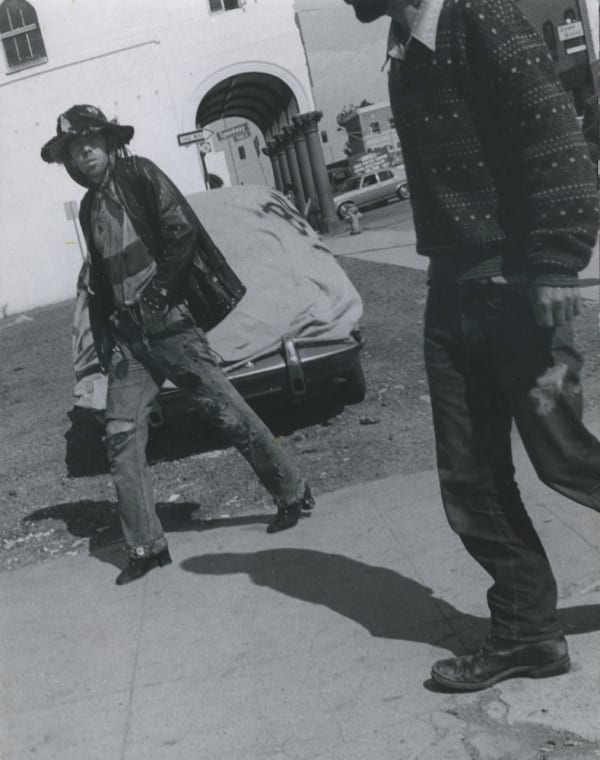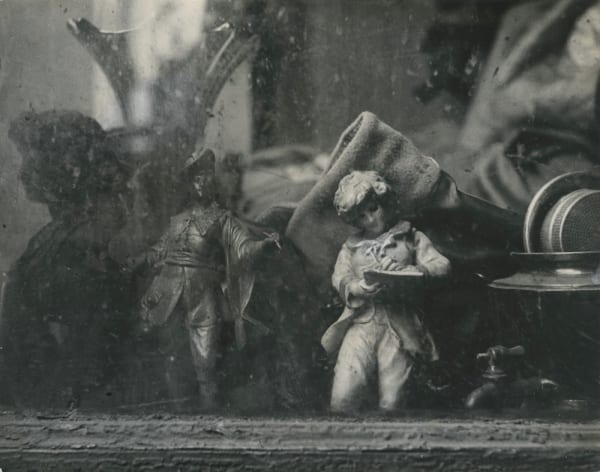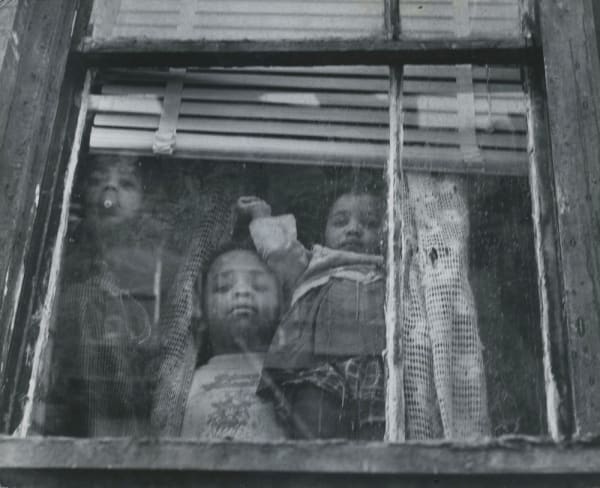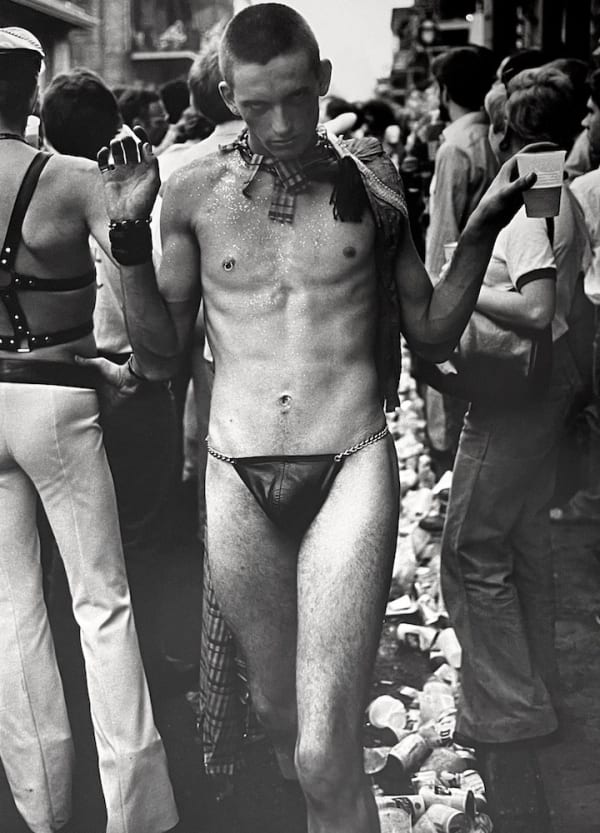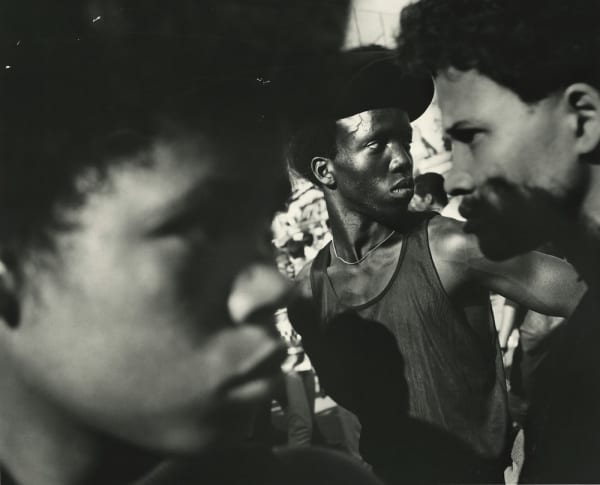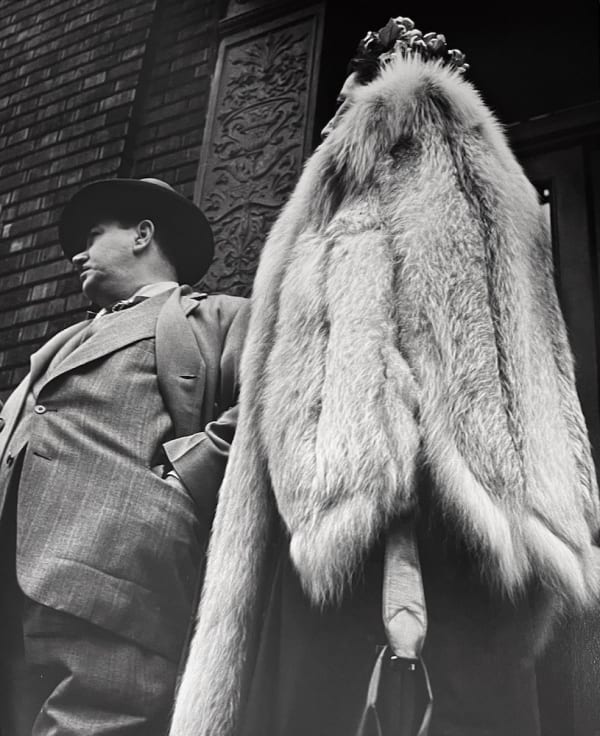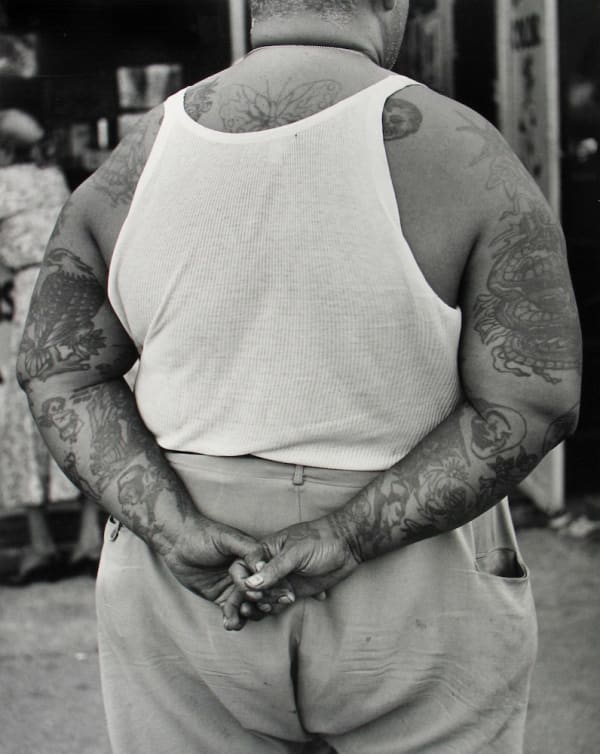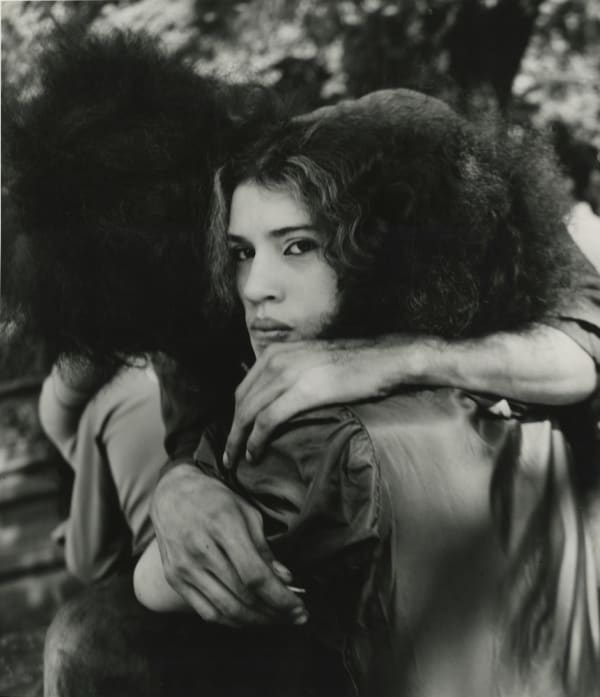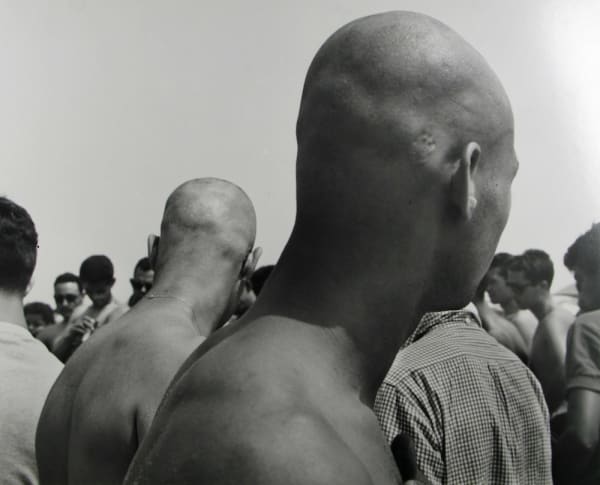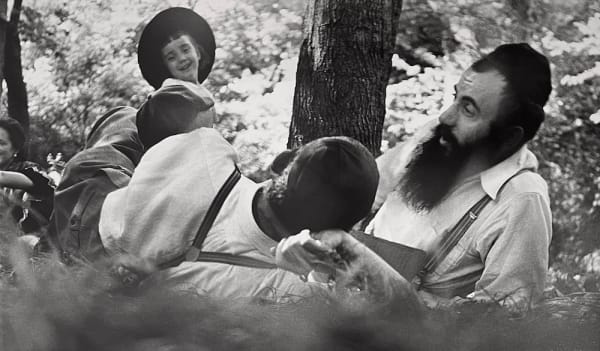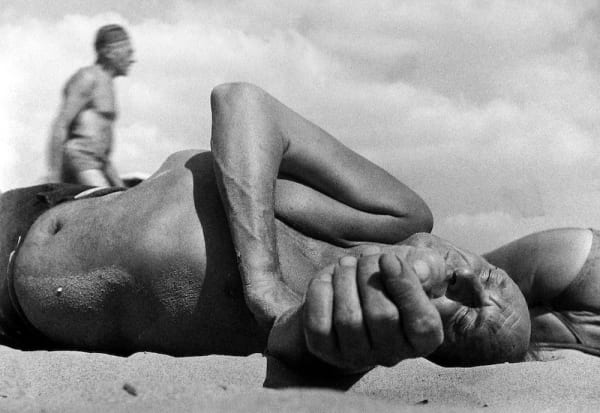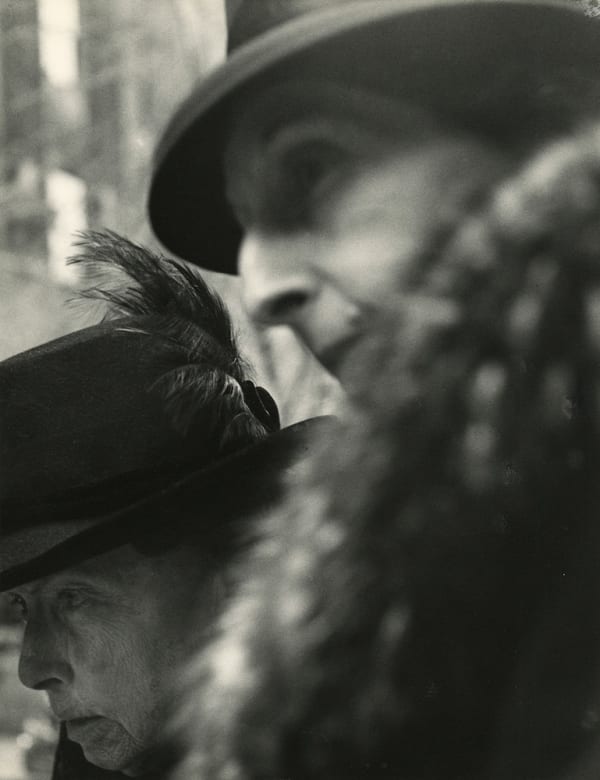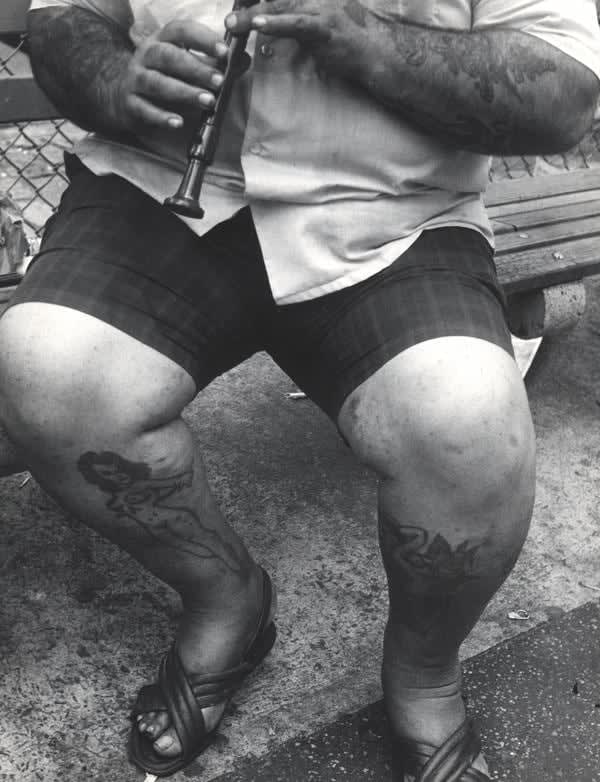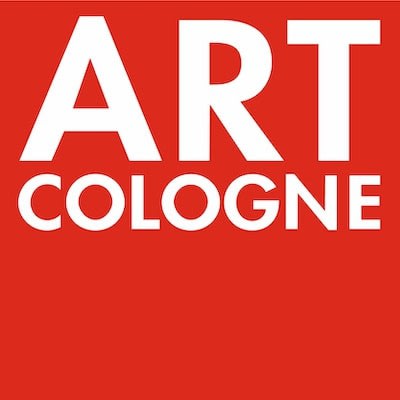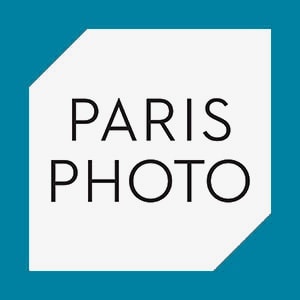Leon Levinstein Américain, 1910-1988
Leon Levinstein (1910 - 1988) was born in Buckhannon, West Virginia and attended college at the Maryland Institute of Arts. Levinstein remained in Baltimore until he enlisted in the army in 1942, serving mostly in Panama, as a propeller repair mechanic with the Air Corps. Shortly after his discharge from the army, with the rank of a sergeant in October 1945, he moved to New York City to work as an art director in his cousin’s advertising agency. In 1947–48 he studied with John Ebstel and Sid Grossman at the Photo League, and then in 1948–51 with Stuart Davis and Alexey Brodovitch at the New School for Social Research. He studied with Grossman for another three years. In the 1950s and 1960s, his work was published extensively in major magazines such as Popular Photography and U.S. Camera Annual, and won Popular Photography 1952’s International Photography Contest. In 1956, Levinstein exhibited at Helen Gee’s Limelight Gallery, the only solo show during his lifetime. Both Alexey Brodovitch, artistic director of Harper’s Bazaar, and Edward Steichen, renowned photographer and curator at the Museum of Modern Art recognized Levinstein’s talent; Levinstein’s photographs were included in nine group shows at the Museum of Modern Art. Levinstein rarely worked on assignment and never made photography books. He earned his living as a graphic designer, not as a professional photographer, and generally remained aloof from the art world (he received a Guggenheim Fellowship in 1975). This lack of broader recognition did nothing to slow him down, and he continued to photograph throughout his life.
Levinstein’s work has a graphic virtuosity, using raw gestures and monumental bodies, balancing compassion and cruelty painting with shadows and light, portraying gently and direct the inhabitants of the streets he roams. He would skulk through crowds, blend in, and observe things that others would miss. Photographing strangers at close range, Levinstein captured the back alleys of New York City framing the faces, flesh, poses, and movements of his fellow city dwellers: couples, kids, beggars, prostitutes, families, society ladies, and sunbathers. Levinstein is best known for his candid and unsentimental black-and-white figure studies made in New York City neighborhoods from Times Square and the Lower East Side to Coney Island and Harlem.
Source: Howard Greenberg Gallery
-
 Untitled (N.Y.), c.1958View more details
Untitled (N.Y.), c.1958View more details -
 Untitled (Mexico), 1975View more details
Untitled (Mexico), 1975View more details -
 Untitled (Florida), 1976View more details
Untitled (Florida), 1976View more details -
 Untitled (Lower East Side), 1964View more details
Untitled (Lower East Side), 1964View more details -
 Untitled (man with a white hat), n.d.View more details
Untitled (man with a white hat), n.d.View more details -
 Untitled (N.Y.), 1963View more details
Untitled (N.Y.), 1963View more details -
 Untitled (Central Park), 1968View more details
Untitled (Central Park), 1968View more details -
 Untitled (Venice, California), 1975View more details
Untitled (Venice, California), 1975View more details -
 Untitled (Antique store window N.Y.), 1952View more details
Untitled (Antique store window N.Y.), 1952View more details -
 Untitled (two women with child.), n.d.View more details
Untitled (two women with child.), n.d.View more details -
 Untitled (man and child), n.d.View more details
Untitled (man and child), n.d.View more details -
 Untitled (Central Park), 1968View more details
Untitled (Central Park), 1968View more details -
 Untitled (New Orleans), 1975View more details
Untitled (New Orleans), 1975View more details -
 Coney Island, New York City, c.1980View more details
Coney Island, New York City, c.1980View more details -
 Untitled (couple in New York, woman with fur coat, street fashion #2), c.1954View more details
Untitled (couple in New York, woman with fur coat, street fashion #2), c.1954View more details -
 Back Tattoo, c.1965View more details
Back Tattoo, c.1965View more details -
 Central Park, New York, 1974View more details
Central Park, New York, 1974View more details -
 Coney Island, 1953View more details
Coney Island, 1953View more details -
 Untitled (Prospect Park), c.1955View more details
Untitled (Prospect Park), c.1955View more details -
 Coney Island (old man lying in sand), c.1955View more details
Coney Island (old man lying in sand), c.1955View more details -
 The Screen, Child in Window, Lower East Side, 1951View more details
The Screen, Child in Window, Lower East Side, 1951View more details -
 Untitled (Two women, feather hat, fur coat), c.1960View more details
Untitled (Two women, feather hat, fur coat), c.1960View more details -
 Untitled (Tattooed man playing the flute), c.1960View more details
Untitled (Tattooed man playing the flute), c.1960View more details -
 5th Street and Bway, c.1958View more details
5th Street and Bway, c.1958View more details -
 New Orleans (man in striped shirt), 1977View more details
New Orleans (man in striped shirt), 1977View more details
